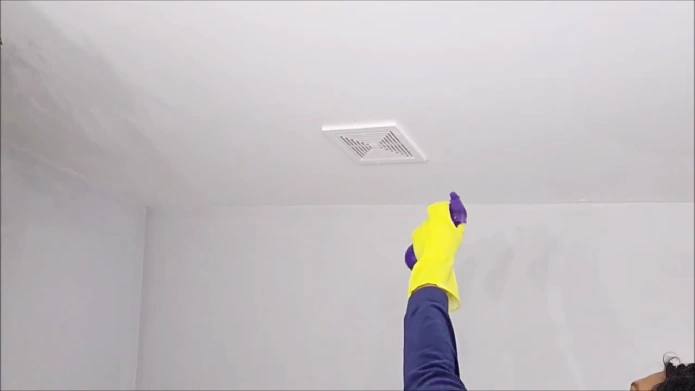Last Updated on March 6, 2023
Yellow spots on your bathroom ceiling can be an eyesore that’s difficult to get rid of. Unfortunately, the cause of these stains could be due to a variety of things like mold, mildew, poor ventilation systems, and even nicotine smoke.
Though you may have figured out what caused them, the real challenge is getting rid of the discoloration and making sure it doesn’t come back.
To help you keep your bathroom looking spick and span, try one of several proven methods to remove yellow spots: chlorine bleach solution, dish detergent blend, baking soda with soap suds, vinegar’s cleaning power or undiluted lemon juice can all do the trick.
If you want something more effective and convenient, you can always opt for an all-purpose commercial mold-killing product.
Read on for our top six proven methods for cleaning these annoying yellow stains and tips for aftercare advice to help prevent regrowth.
How to Clean Yellow Spots on Bathroom Ceiling: 6 Proven Methods

Cleaning off yellow spots from your bathroom ceiling is an unpleasant task, but keeping your living space fresh and clean is important.
There are six main options for removing these spots, using a chlorine bleach solution, a dish detergent mixture, baking soda, vinegar, undiluted lemon juice, or a commercial mold-killing product.
Method 1: Using Chlorine Bleach Solution:
Chlorine bleach is one of the most effective solutions for cleaning yellow spots off of your bathroom ceiling. This approach is quick and easy but may discolor other surfaces or fabrics if you use excessive bleach.
Start by diluting 1/2 cup of bleach in one gallon of warm water and using it to saturate a cloth or sponge before wiping down the affected area.
Make sure that you wear safety gloves while doing this to protect yourself from any residual chemicals.
Leave the solution on the spot for around 15 minutes before rinsing it off thoroughly with cold water.
Method 2: Using Dish Detergent Mixture:
You can also use a combination of dish detergent and warm water to remove yellow spots on the ceiling of your bathroom. This approach takes more time than using chlorine bleach, but it won’t damage other surfaces as easily, so you don’t have to worry about accidentally discoloring them in the process.
- Put about 2 tablespoons of liquid detergent into a bucket filled with warm water and stir to combine it well before dipping them in a cloth or sponge.
- Then, scrub gently at the affected area until you see improvements.
- Once you’re done, rinse off the area with cold water for the best results.
Method 3. Using Baking Soda with Dish Soap
Using baking soda and dish soap to clean yellow spots on the bathroom ceiling is a simple, inexpensive solution. Wear protective gloves and safety glasses when handling this mixture, as it can be harsh on the skin and eyes if splashed or rubbed against them.
- To begin, mix two teaspoons of baking soda in one cup of warm water until they are fully blended together.
- Then, add a few drops of liquid dish soap and stir again until the mixture is completely blended.
- Dip a sponge or soft cloth into the solution and wring it out so it is not dripping wet.
- Gently rub the sponge or fabric over the yellow spot on your bathroom ceiling until the stain has been removed.
- After you’ve finished cleaning, rinse off any remaining solution with a damp towel or sponge to make sure all traces of cleaner are gone.
- Once everything is clean, use an old towel or rag to dry off any excess moisture from the area.
Method 4. Using Vinegar:
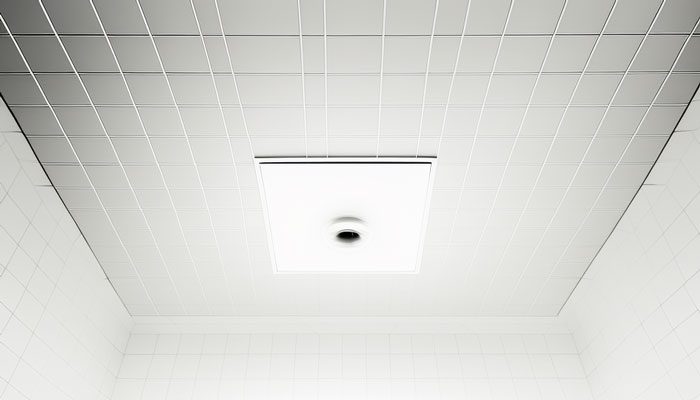
- Always wear safety glasses and gloves while using vinegar, as it can irritate skin, eyes, and lungs if inhaled or splashed onto them directly.
- To clean yellow mold or spots from bathroom ceilings using vinegar, combine equal parts white vinegar and water in a spray bottle or bowl.
- Once mixed together, spray or pour the solution onto the yellow spots on the ceiling and let them soak for 10-15 minutes.
- Use a damp microfiber cloth to gently scrub away any residue left behind by the vinegar solution.
- Then, rinse off with clean water afterward to remove any remaining traces of vinegar solution from the area around the yellow spot.
Method 5. Using Undiluted Lemon Juice:
- Start by mixing equal parts of 5% undiluted lemon juice and water in your spray bottle, stirring or shaking the mixture to ensure it is thoroughly blended.
- Spray diluted lemon juice mixture on the stained ceiling, being sure to saturate them completely.
- Allow the lemon juice to remain on the spots for about 15 minutes before wiping it away with a soft cloth. Repeat this process if needed until all of the yellow spots are gone.
- For tougher stains, you may need to apply undiluted lemon juice directly to the spot and scrub with a soft-bristled brush or sponge before rinsing with clean water and drying with a towel.
Method 6. Using Commercial Mold-killing Product:
Wear appropriate protective gear before applying them in order to avoid irritation or harm.
Begin by spraying commercial mold-killing products onto any yellow spots on your bathroom ceiling from a safe distance, ensuring you completely saturate them.
Let the product sit for about 10 minutes before wiping away any residue with a damp cloth or sponge that has been dipped into warm soapy water first.
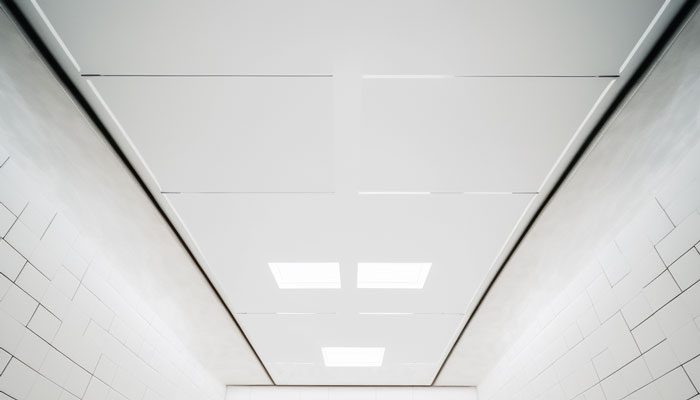
Be sure to rinse any excess product off of your ceiling afterward, avoiding contact with your eyes or skin. If necessary, repeat this process one more time for especially stubborn yellow spots until they have disappeared entirely.
Afterward, ensure you open any nearby windows or doors to disperse airborne mold spores that may have been released while using these chemical products.
Bathroom Ceiling Cleaning Aftercare to Prevent Regrowth
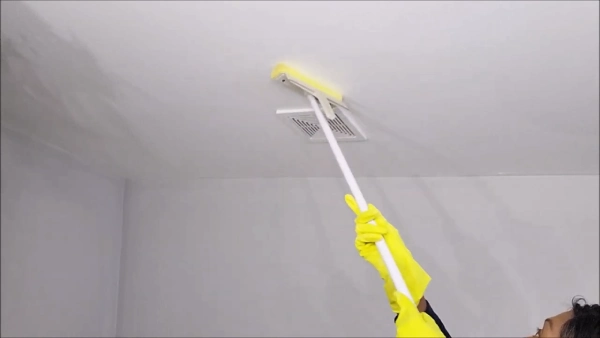
Proper care and maintenance of your bathroom ceiling are key for preventing mildew or mold regrowth. After cleaning your bathroom ceiling, it is important to take the correct steps of aftercare to ensure that all traces of mildew are gone and that they do not return.
1. Allow Ceiling To Dry Completely:
After cleaning the bathroom ceiling, it’s essential to allow it to dry completely before repainting it if desired. Opening a window or using a fan will help speed up the drying process, as well as provide proper ventilation for the area.
Checking periodically for any leaks in the bathroom will also help avoid creating an environment suitable for mold growth.
2. Use Appropriate Paint:
If you’re planning on repainting over the cleaned ceiling, it’s recommended to choose paint specifically designed for bathrooms that are resistant to water and humidity. This type of paint helps prevent moisture from seeping into crevices and corners which can contribute to mold growth.
3. Check For Leaks Regularly:
Checking for leaks regularly is key when trying to prevent further growth of mold or mildew in your bathroom. This can be done by inspecting the walls, floors, and ceilings around fixtures such as bathtubs, showers, and sinks on a monthly basis or following heavy rainfall or snowfall events.
Keeping an eye out for signs of water damage such as discoloration or warping in certain areas, can also help identify potential problems before they become too large.
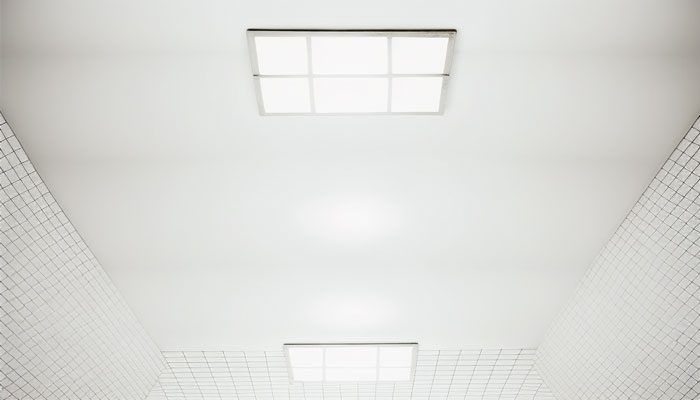
4. Invest In A Dehumidifier:
Investing in a dehumidifier can be extremely helpful when trying to keep your bathroom free from potential mold growth issues. A dehumidifier helps reduce humidity levels by taking moisture out of the air which can create an unfavorable environment for mildew development.
Running a dehumidifier regularly will also minimize condensation build-up which can increase levels of humidity within your home.
5. Maintain Cleanliness & Ventilation:
Open a window for proper ventilation while you’re bathing to prevent mold or mildew from growing due to high humidity levels. Hot showers release steam that can get trapped between walls if not given an outlet, so let the warm moist air escape outside and keep things free-flowing.
It is important to keep surfaces clean. This will help reduce the chances of microbes building up on surfaces like floors. If this happens, it can make the living conditions in your home dangerous over time.
Why Does Your Ceiling Have Yellow Spots?
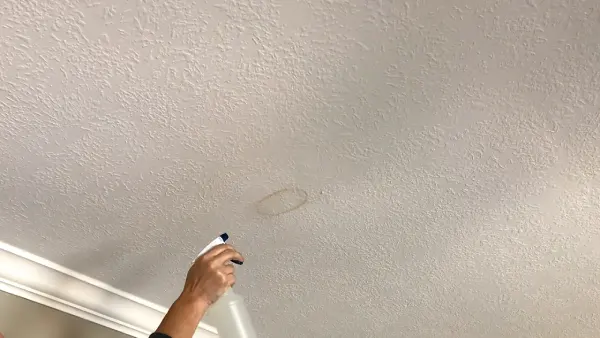
Yellow spots on bathroom ceilings can be caused by a variety of issues, including mold and mildew growth, poorly ventilated systems, leaks in plumbing, improper use of paint products, and nicotine smoke. It’s important to identify the cause of the yellow spots in order to determine the best course of action for removing them.
1. Mold and Mildew Growth:
If you’ve ever noticed mysterious patches of yellow or green on your bathroom walls and ceilings, humidity is likely the culprit. Moisture in the air creates an inviting place for mold spores to colonize; they love nothing more than high levels of dampness.
So if it’s been feeling a bit too muggy lately, don’t be surprised when these fuzzy fungi start showing up. That might just mean there’s some extra moisture in the atmosphere.
2. Poorly Ventilation Systems or Installed Bathroom Fans:
Improper ventilation systems or absent bathroom fans can contribute to a buildup of moisture in the area due to the inability to expel steam from showers or baths properly.
The warm, humid air of your bathroom can sometimes create a breeding ground for pesky fungus. These unwelcome guests usually arrive in the form of black spots or light yellow stains on your ceiling- and no one likes uninvited houseguests!
If there is no window present in your bathroom, then this will greatly reduce airflow, which further exacerbates this issue even more so with time.
3. Leaks in Plumbing and Roofing:
Leaks from plumbing fixtures provide the perfect opportunity for fungal growth, slowly dripping down through porous surfaces and damaging more than just your ceilings.
These leaks can introduce hazardous amounts of water to areas within walls, floors, and ceilings. These mounting moisture levels create the ideal environment for colonies of fungi to thrive on, leaving you with more than an eyesore and potential health issues.
4. Improper Application or Use Of Paint Products:
Bathroom ceilings can suffer from a discoloration catastrophe if you don’t use the right paint products. Primers and sealants may seem like simple solutions, but chemical reactions between these items and environmental factors such as humidity levels can cause yellow stains over time.
Painting without proper sealing of porous surfaces can lead to discoloration over time. However, using the right techniques while painting offers a way to help reduce this risk.
5. Nicotine Smoke:
Cigarette smoke is filled with thousands of complex organic compounds and nicotine, which can wreak havoc on your home’s appearance. The fumes in bathrooms are particularly dangerous for turning ceilings yellow stain due to the lasting corrosive effects from exposure to this acidic agent over time.
Smoking indoors can generate higher levels of humidity than normal, leading not only lead paint pigments but also other contaminants into growing colonies over time.
Are Yellow Spots Mold?
Yellow spots are often a sign of mold growth. Certain species of mold have a distinct yellow color and can appear in various shapes and sizes. As a result, it is common for many mold species to appear yellow as they grow in areas such as ceilings, walls, and furniture.
What Do Water Stains Look Like On Ceiling?
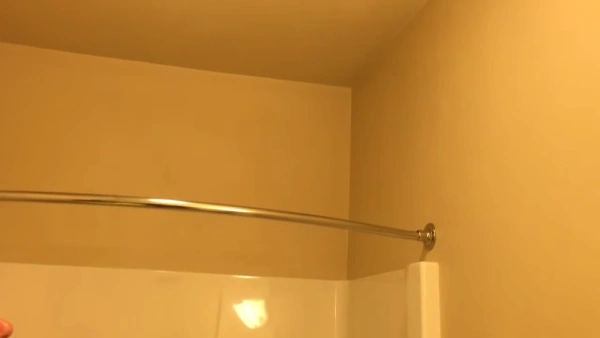
Water damage to ceilings is never a pleasant sight, leaving unsightly brown spots and discolored patches. It can happen if dampness seeps through the paint layers. The best way to prevent yellow spots from coming through the paint is by using an alkali-resistant primer or a stain block.
Why Are Yellow Spots Coming Through Paint?
Yellow spots coming through the paint can be attributed to dampness or a water leak that has gone undetected for a period of time behind existing paintwork. It causes moisture and humidity levels in enclosed spaces to rise, which leads to mold growth, which looks yellow when viewed up close because of its pigmentation.
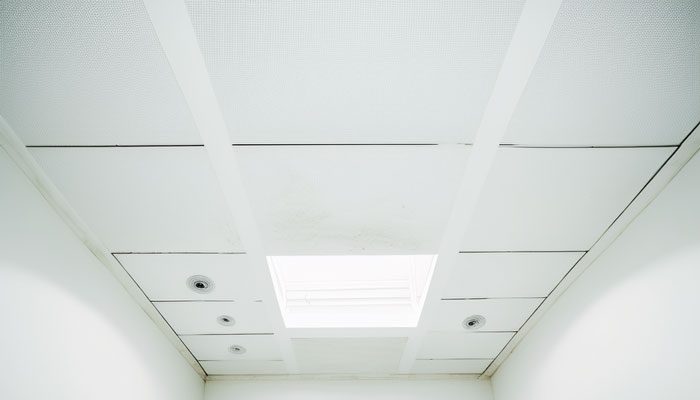
Safely Clean Yellow Spots Off Your Bathroom Ceiling and Keep Them Away for Good
As you can see, there are several effective methods for cleaning yellow spots off your bathroom ceiling. Put on protective gear like gloves and goggles for a safe clean-up job, then use aftercare measures to stop regrowth in its tracks.
You might be intimidated when you see yellow on your bathroom ceiling, but taking proactive steps with hygiene and organization will keep your home looking great. With all the tips mentioned above, plus regular maintenance checks in place, you’ll be able to overcome this challenge with ease.

